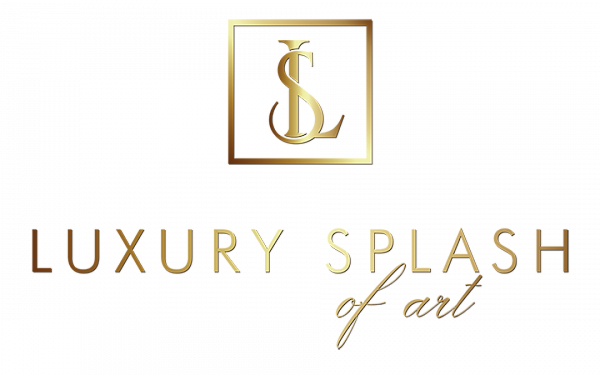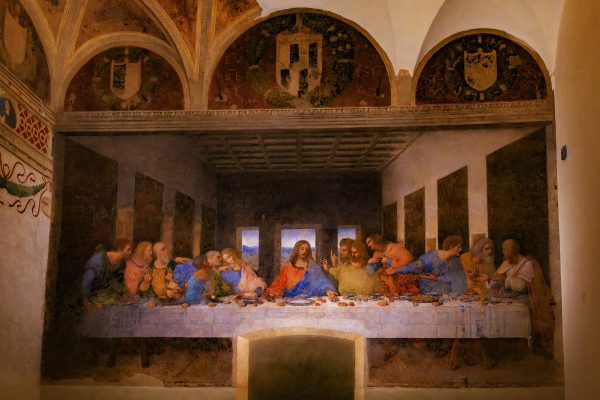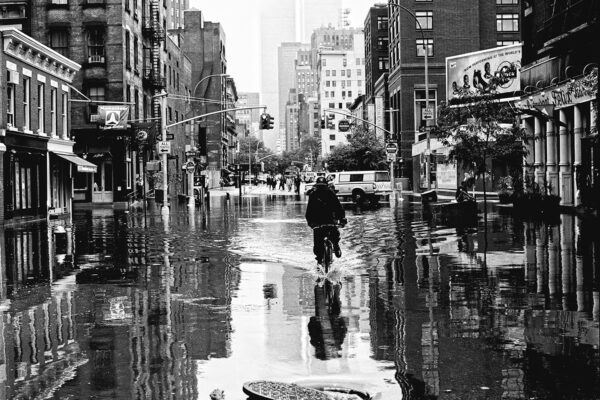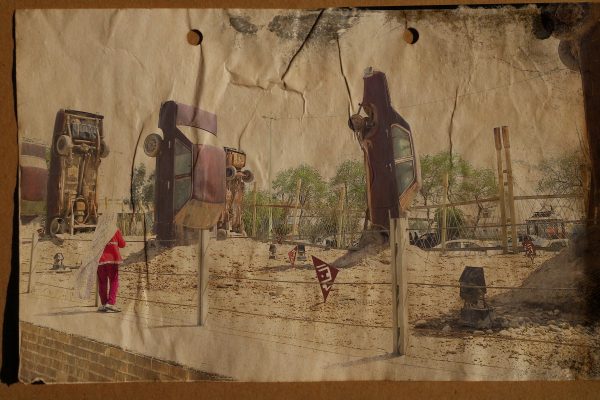A celebration of Chinoiserie, the theatrically stunning stage set is abuzz with expectation. The artists, along with their fashionista friends, flocking to the Michelin-starred Jing Yaa Tang bistro will soon embark on a voyage celebrating dance and architecture. Its avant-garde aesthetics will be in perfect harmony with this stylish house, a showcase of curated wooden materials, waving steel curtains, and striking minimalism. But first the grand feast, why Beijing’s Opposite House attracts the city’s toniest crowd. Teased and seduced by a host of reimagined Chinese specialties, they talk animatedly about their latest painting or sculpture–and then their patience is rewarded. The star arrives, Chef Li Dong’s Peking Duck. More delights will follow at the House. Close to Tiananmen Square, it is an audacious, 99 guest-studio lodging that combines attention-grabbing Japanese modernity with a bow to still-revered classical imagery. Designed by free-spirited, Tokyo-based architect Kengo Kuma, an irreverent “opposite” known for writing about “erasing” architecture, the hotel aesthetically mirrors his rebelling against age-old strictures.
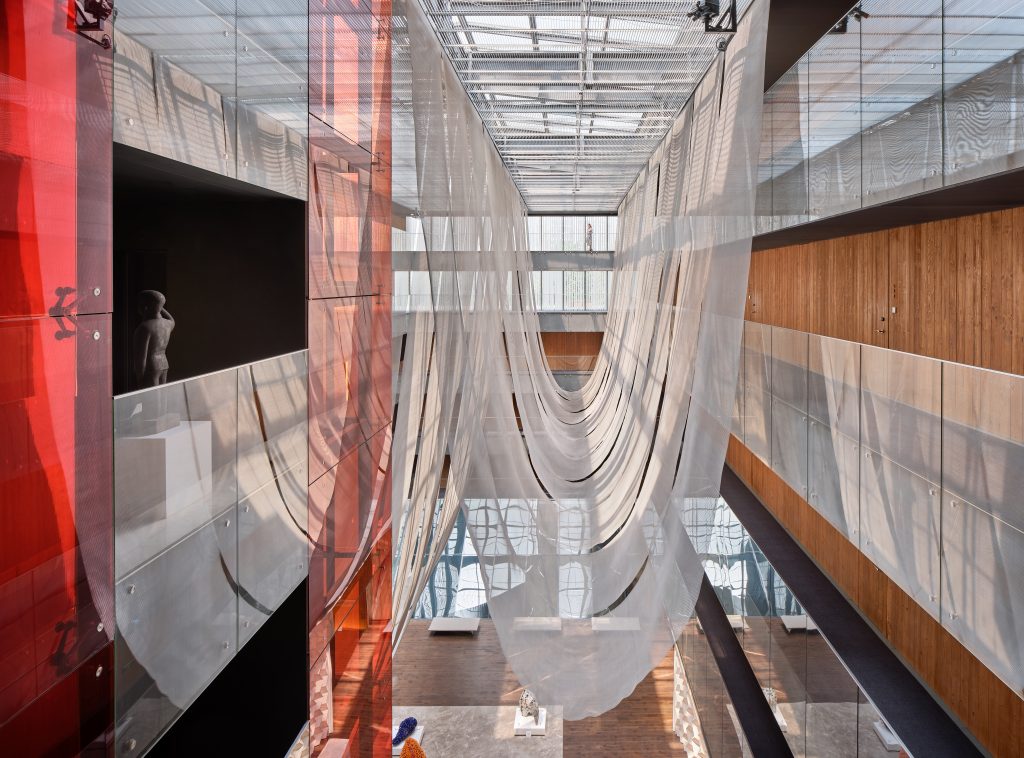
Cultivating a distinct “boundary breaking” vibe with innovative art installations and an artist residency program, this emerald glass sanctum foretells the future. An immersive foray into inviting “openness,” the House is tomorrow’s hospitality, integrating provocative experiences with calming, gallery-like spaces. The Atrium’s welcoming, billowing mesh screens initially indicate that Kuma linked hospitality with fascination. The green glass walls glimmer, alive with the hope that more wonders will follow. “We wanted to create an inviting Zen type of feeling, constant visual excitement,” says General Manager Olivier Dumonceaux, referring to Kuma’s imaginative flair. “The atrium is unique, a reception area fittingly filled with light…to illuminate our commitment to contemporary art and to inspiring our guests.”Designed 13 years ago, the House is not a total break with China’s vaunted past. Controversial Shanxi sculptor Wang Jin used nylon fishing thread and industrial materials PVC (plastics) to embroider a sumptuous Imperial Robe.
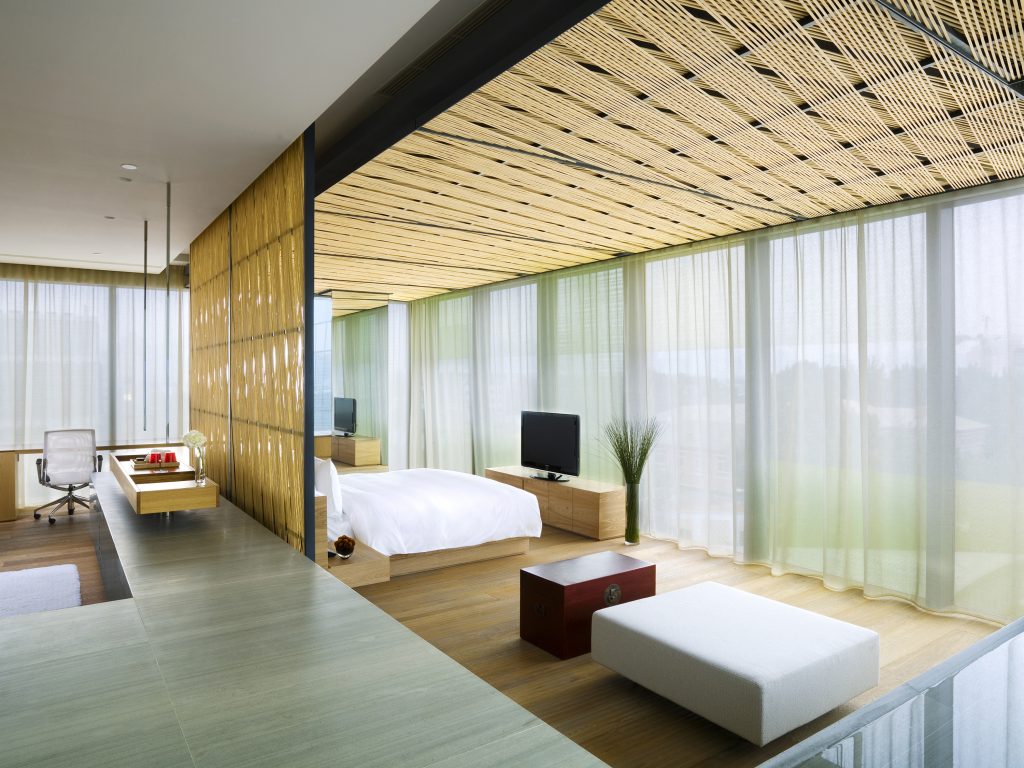
Similarly honorific, Ming Dynasty porcelains from Li Xiao Feng celebrate China’s cradle of creativity. But echoing Dumonceaux‘s saying the “Atrium is meant to be Siheyuan…a welcoming place that brings Nature into the reception area,” this “reinvented” Chinese courtyard is dominated by a “huge soft Origami.” A lightweight suspension composed of acrylic plates and synthetic textiles to energize the “transmission of light,” this soothing, yet resonant work evokes community, unity in a peaceful environment. Accentuating the House’s minimalist verve, the Atrium has served as a backdrop for several exhibitions. Believing blood vessels symbolize the “amazing power of the Creator,” Huang Yiwei utilized hand-woven wires in The Invisible Vein to depict the vascular system in the midst of global turmoil.
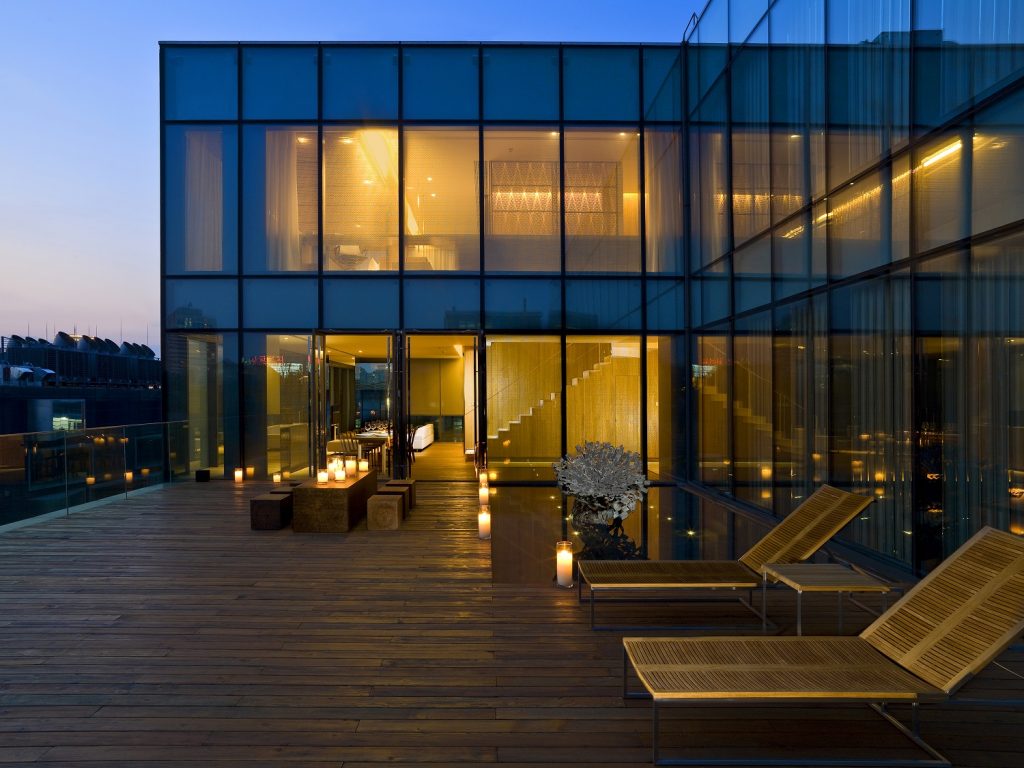
Zen-In Architects’ Treading Waves “presents the natural ocean in an indoor space.” These architects innovatively positioned lights under ceramic roof tiles “to form the motion of waves…to create a scattering effect that mimics the way sunlight is refracted underwater.”Ethereal, calming visions are rare in frenetic Beijing. It is an ever-evolving city, and the House is meant to be an opposite, a comforting constant in the midst of startling change. Wellness and rejuvenation are important here. Gazing at those “waves” is a soothing indulgence, and so are the Vinyasa Flow (yoga) sessions, and the 22-metre infinity pool–lit by a constellation of fibre optic stars. The earthy-toned suites, with their timber furnishings, wooden bathtubs, gray, slate walls, and Bang & Olufsen entertainment systems, are equally restorative. Kengo Kuma created a “deep sense of Zen” in spacious Suite 115, an “open” 1238 sq ft environment boasting a deep soaking tub, jacuzzi, lush cotton linens, and a private balcony.

Kuma’s simplicity is further extolled in the glass-encased Penthouse. A virtual prism of light, this “serene oasis” is a two-floor, 4198 sq.ft exhortation to soar above Beijing’s chaotic tumult. It is pure Kuma, urging us to flee from the obtrusive, and to navigate the unknown. That liberating ethic is especially felt on the Penthouse terrace, Kuma’s floating retreat in the sky (according to the New York Times, he favors “allusions, tricks of the eye and uncertain thresholds”). Besides offering sweeping views of the city, this expansive rooftop pampers guests with two shallow pools, perfect for blissful reflection.
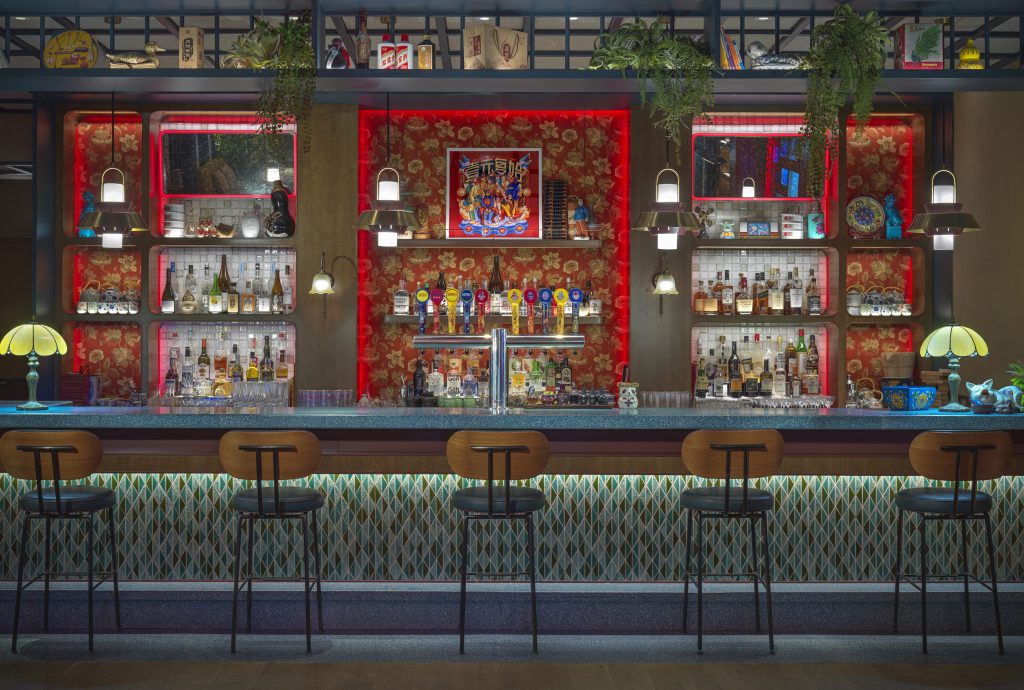
Idling there flaunts its own sensory rewards. But once renewed on the roof, or in one of those wooden tubs, it’s time for mixology, enjoying a few innovative cocktails at “Superfly.”A retro-casual gastro bar with street-cred playlists, this hip, artist hangout turns on the electricity. It’s a current circulating throughout the House. A place where opposites intermingle, creating a distinct art form for the House of Tomorrow.
Written By Edward Kiersh
https://www.thehousecollective.com/en/the-opposite-house/
